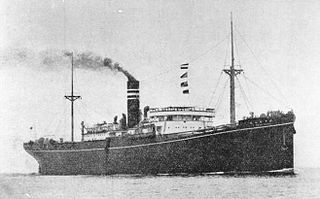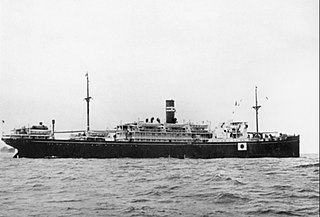 W
WAikoku Maru (愛国丸) was an armed merchant cruiser of the Imperial Japanese Navy in World War II. The ship entered service in 1940, the ship was later converted to an ammunition ship. She was destroyed in February 1944.
 W
WAkikaze was a Minekaze-class destroyer, built for the Imperial Japanese Navy immediately following the end of World War I. The Minekaze class of destroyers were considered advanced for their time; these ships served as first-line destroyers through the 1930s. The class was considered obsolete by the start of the Pacific War and served in a number of roles including minesweeper, aircraft rescue ships and Kaiten-carriers.
 W
WAsama Maru was a Japanese ocean liner owned by Nippon Yusen Kaisha (NYK). The ship was built in 1927–1929 by Mitsubishi Shipbuilding & Engineering Co. at Nagasaki, Japan. The vessel was named after an important Shinto shrine.
 W
WThe Awa Maru (阿波丸) was a Japanese ocean liner owned by Nippon Yusen Kaisha. The ship was built in 1941–1943 by Mitsubishi Shipbuilding & Engineering Co. at Nagasaki, Japan. The vessel was designed for passenger service, but the onset of war by the time work was completed changed requirements, and she was requisitioned by the Japanese Navy. While sailing as a relief ship under Red Cross auspices in 1945, she was torpedoed by USS Queenfish (SS-393), killing all but one of 2,004 people aboard.
 W
WThe Chichibu Maru (秩父丸) was a Japanese passenger ship which, renamed Kamakura Maru, was sunk during World World II, killing 2,035 soldiers and civilians on board.
 W
WThe Hofuku Maru, also known as Hohuku Maru was a Japanese Dai-ichi Taifuku Maru-class cargo ship, sunk on September 21, 1944 by American aircraft, while carrying 1,289 British and Dutch prisoners of war (POWs); 1,047 of them died.
 W
WJun'yō Maru (順陽丸) was a Japanese cargo ship that was attacked and sunk in 1944 by the submarine HMS Tradewind, resulting in the loss of over 5,000 lives.
 W
WSS Kachidoki Maru was a former US passenger ship, built in 1920 and captured by the Japanese in 1941, which was torpedoed on 12 September 1944, carrying 950 Allied POWs of which 431 were killed.
 W
WLisbon Maru (りすぼん丸) was a Japanese cargo liner built at Yokohama in 1920 for a Japanese shipping line. During World War II the ship became an armed troopship. On her final voyage Lisbon Maru was also transporting prisoners-of-war between Hong Kong and Japan when torpedoed on 1 October 1942, sinking with a loss of over 800 lives.
 W
WMontevideo Maru was a Japanese auxiliary ship that was sunk in World War II, resulting in the drowning of many Australian prisoners of war and civilians being transported from Rabaul, in what is considered the worst maritime disaster in Australia's history. Prior to the war the ship operated as a passenger and cargo vessel traveling mainly between Asia and South America.
 W
WThe SS Op ten Noort was a luxury Passenger ship built by Nederlandsche Scheepsbouw Maatschappij in Amsterdam, Netherlands and completed in 1927. The ship was built for and owned by Koninklijke Paketvaart-Maatschappij. Op ten Noort means Up North. In December of 1941 she became a Royal Netherlands Navy hospital ship. The Empire of Japan shortly after her conversion stole the ship and renamed her Tenno Maru. Before sinking her, she was renamed again to Hikawa Maru No.2, after the Hikawa Shrine, Saitama. To cover up the war crimes against the ship and her medical crew, at the end of the war, she was sunk on August 17, 1945.
 W
WŌryoku Maru was a Japanese passenger cargo ship which was commissioned by the Imperial Japanese Navy during World War II as a troop transport and prisoner of war (POW) transport ship. Japanese POW transport ships are often referred to as hell ships, due to their notoriously unpleasant conditions and the many deaths that occurred on board. In December 1944, the ship was bombed by American aircraft, killing 200 Allied POWs. Hundreds more died in the months that followed.
 W
WThe Tōfuku Maru (東福丸) was a Japanese Dai-ichi Taifuku Maru-class built and operated cargo ship and hellship.